Contents of this article
- 1. What are China’s 24 traditional festivals?
- 2.What is the order of the 24 traditional festivals?
- 3.What are the 12 traditional festivals in China?
- 4. China’s 12 traditional festival dates
What are the 24 traditional festivals in China?
01
There are not 24 traditional festivals in China, but only 17, namely the Spring Festival, the Lantern Festival, the Dragon Heading Up, the Society Day Festival, and Shangsi Festival. Festival, Cold Food Festival, Qingming Festival, Dragon Boat Festival, Chinese Valentine's Day, Hungry Ghost Festival, Mid-Autumn Festival, Double Ninth Festival, Xiayuan Festival, Winter Solstice Festival, Laba Festival, Little New Year, and New Year's Eve.
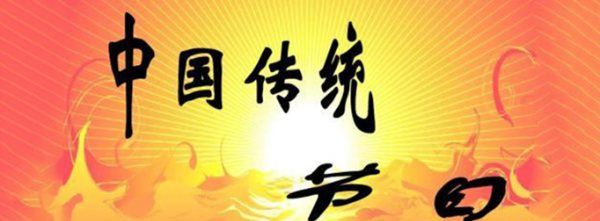
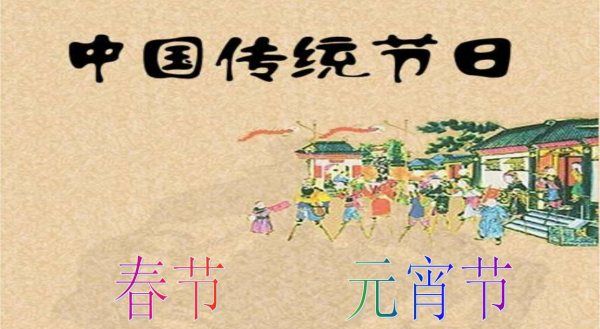
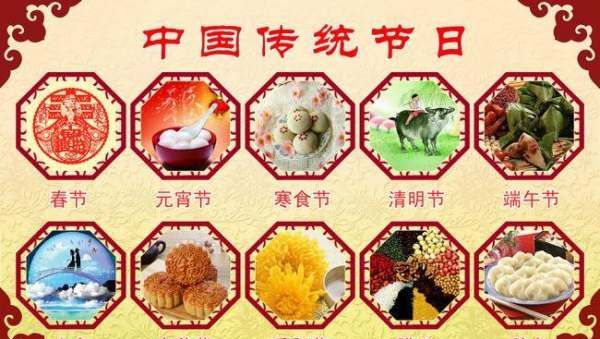
What is the order of the 24 traditional festivals?
There are not 24 traditional festivals in China, but only 17.
1. Spring Festival: the first day of the first month of the lunar calendar; posting couplets, sweeping and dusting, eating dumplings, paying New Year greetings, and setting off firecrackers.
2. Lantern Festival: the fifteenth day of the first month of the lunar calendar. It includes eating Yuanxiao, lantern festival, worshiping gods, walking around, lion dancing, and walking on stilts.
3. The dragon raises its head: the second day of the second lunar month; worshiping the gods, eating dragon food, collecting dragon energy, shaving the dragon's head, setting up a dragon boat, using cattle to farm cattle, writing, and attracting dragons from the fields.
4. Flower Festival: On the second day of the second lunar month, there is a festival to celebrate the festival, go out to visit spring butterflies, plant flowers and pick vegetables, dry seeds to pray for good harvests, and make flower cakes.
5. Cold Food Festival: April 4 or 5 in the Gregorian calendar (the day before Tomb-Sweeping Festival); sacrifices to sweeps, outings, swings, Cuju, lead hooks, and cockfighting.
6. Qingming Festival: April 5 or 6 in the Gregorian calendar; outing, tomb sweeping, tree planting, kite flying, eating youth balls, inserting willows, tug-of-war, swinging, shooting willows, and silkworm flower party.
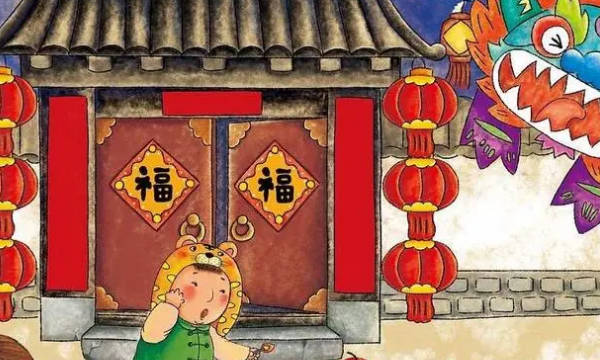
7. Dragon Boat Festival: The fifth day of the fifth lunar month; dragon boat racing, eating rice dumplings, hanging mugwort and calamus, tying colorful ropes, drinking realgar wine, avoiding five poisons, hiding from the Dragon Boat Festival, pasting the noon hour talisman, wearing damselflies, and painting foreheads.
8. Chinese Valentine's Day: the seventh day of the seventh lunar month; gatherings at fragrant bridges, collecting dew, worshiping ghosts and gods, praying for marriage, fighting tricks, listening to whispers, tying a red headband, and watching movies on pure water.
9. Ghost Festival: the 14th or 15th day of the seventh lunar month; worshiping ancestors, setting off river lanterns, worshiping the souls of the dead, burning paper ingots, and offering sacrifices to the land.
10. Mid-Autumn Festival: The 15th day of the eighth lunar month; people enjoy the moon, worship the moon, eat moon cakes, drink osmanthus wine, light lanterns, have lantern shows, watch the tide, burn pagodas, play with rabbits, and hold banquets.
11. Double Ninth Festival: September 9th in the lunar calendar; people climb mountains for autumn outings, worship ghosts and gods, wear dogwood, eat Double Ninth cakes, and drink chrysanthemum wine.
12. Winter Clothes Festival: the first day of the tenth month of the lunar calendar; people send cold clothes to their ancestors in the form of tomb sweeping and worship.
13. Xiayuan Festival: the 15th day of the 10th month of the lunar calendar. It is a time to prepare meals and hold rituals to worship ancestors and gods.
14. Winter Solstice Festival: October 21st or 22nd in the Gregorian calendar; worship ancestors, hold banquets, etc.
15. Laba Festival: the eighth day of the twelfth lunar month; eat Laba porridge, Laba vinegar, Laba garlic, eat ice, eat Laba tofu, and eat Laba noodles.
16. Off-year: the 23rd or 24th day of the twelfth lunar month; clean the house, take a bath, eat sweets, and offer sacrifices to ghosts and gods.
17. New Year's Eve: the 29th or 30th day of the twelfth lunar month; New Year's Eve dinner, sticking New Year's red cards, burning firecrackers, worshiping ancestors, keeping watch, hanging lanterns and giving New Year's money.
What are the 12 traditional festivals in China?
There are 17 in total, not 24.
1. Spring Festival
The Spring Festival has a long history, and is commonly known as New Year, New Year, New Year's Day, etc. People often say that this is the day to celebrate the New Year or New Year. The Spring Festival now falls on the first day of the first lunar month of the narrow lunar calendar, and from the first to the fifteenth day of the first lunar month of the broad lunar calendar. During the Spring Festival, various New Year celebration activities are held across the country, with strong regional characteristics.
2. Lantern Festival
The Lantern Festival, also known as Lantern Festival, Little New Year Festival, Lantern Festival, etc., falls on the 15th day of the first lunar month every year. Since ancient times, the Lantern Festival has been dominated by the warm and festive custom of viewing lanterns. The fifteenth day of the first lunar month is the first full moon night of the year, so people call the fifteenth day of the first lunar month the "Lantern Festival".
3. The dragon raises its head
The Dragon Heads Up Festival, also known as Spring Plowing Festival, Spring Dragon Festival, etc., is a traditional Chinese folk festival that falls on February 2nd of the lunar calendar every year. "Dragon" refers to the seven constellations of the Eastern Canglong among the twenty-eight constellations. At the beginning of the Mao month in mid-spring every year (Dou Zhizhidong), the "Dragon Horn Star" rises from the eastern horizon, so it is called "Dragon Heads Up".
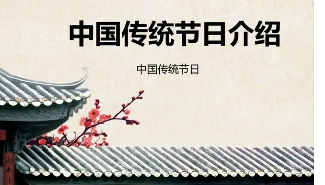
4. Social Day Festival (Land Festival)
She Day, also known as Land Festival, falls on the second day of the second lunar month every year. It is an ancient traditional Chinese festival. She Day is divided into Spring She and Autumn She. In ancient times, the social festival dates were determined based on the Ganzhi calendar. Later, due to changes in the calendar, the lunar calendar was used to determine the festival dates. During the She Day Festival, it is a folk custom in my country to set up a shrine to offer sacrifices to pray or reward the land god.
5. Shangsi Festival
Shangsi Festival, commonly known as March 3rd, is a traditional festival of the Han nationality. Shangsi Festival has a long history and has become a large-scale folk festival in ancient times. In addition, before the Han Dynasty, this festival was held on Si day in early March, but later it was fixed on the third day of March in the lunar calendar.
6. Cold Food Festival
The Cold Food Festival, also known as the "No Smoking Festival", "Cold Festival" and "Hundred-Five Festival", is a traditional festival popular in northern my country. It takes place 1-2 days before Qingming Festival. In ancient times, the date was not fixed. It is said that it is the day before Qingming Festival, and there is another saying that it is two days before Qingming Festival. Now it is mostly celebrated with Qingming Festival.
7. Qingming Festival
Qingming Festival, also known as Outing Festival, Ancestor Worship Festival, etc., falls at the turn of mid-spring and late spring. It is a major traditional spring festival in my country. Its custom of sweeping tombs, worshiping ancestors, and remembering ancestors has been a fine tradition of the Chinese nation for thousands of years. In addition, the time of Qingming Festival is around April 5 of the Gregorian calendar (Gregorian calendar).
8. Dragon Boat Festival
The Dragon Boat Festival, also known as the Duanyang Festival, Chongwu Festival, Dragon Boat Festival, etc., was on the fifth day of the fifth lunar month before the Han Dynasty. The Dragon Boat Festival has rich and colorful festive activities. Like the Spring Festival, its customs contain cultural connotations such as praying for blessings and eliminating disasters, and express people's good wishes to welcome good fortune, ward off evil spirits and eliminate disasters.
9. Chinese Valentine’s Day
The Qixi Festival, also known as Qijie Festival, Qiqiao Festival, etc., falls on the seventh day of the seventh lunar month every year. The Chinese Valentine's Day is derived from the worship of stars and is the birthday of the Seventh Sister in the traditional sense. Because the event of worshiping the "Seventh Sister" is held on the seventh night of July, it is named "Qixi Festival".
10. Hungry Ghost Festival
The Ghost Festival is a Taoist name. It is popularly known as July 15th, July 14th, and Ancestor Worship Festival. Buddhism calls it the Bon Festival, which falls on the 15th day of the seventh lunar month. The main festival customs include worshiping ancestors, setting off river lanterns, worshiping dead souls, burning paper ingots, and offering sacrifices to land.
11. Mid-Autumn Festival
Mid-Autumn Festival, also known as Zhongqiu Festival, Moon Worship Festival, Reunion Festival, etc., falls on the 15th day of the eighth lunar month. Since ancient times, Mid-Autumn Festival has included worshiping the moon, appreciating the moon, eating moon cakes, playing with lanterns, appreciating osmanthus flowers, drinking osmanthus wine and other folk customs that have been passed down to this day.
12. Double Ninth Festival
The Double Ninth Festival falls on the ninth day of the ninth lunar month every year and is a traditional Chinese folk festival. In ancient times, during the Double Ninth Festival, people had customs such as climbing high to pray for blessings, going on autumn outings to appreciate chrysanthemums, planting dogwood trees, offering sacrifices to gods and ancestors, and drinking banquets to pray for longevity. It has been passed down to this day, and connotations such as respecting the elderly have been added. On the Double Ninth Festival, a banquet is held to express gratitude and respect for the elderly.
13. Winter Clothes Festival
Winter Clothes Festival, also known as "October Dynasty", "Ghost Head Day", etc., falls on the first day of October in the lunar calendar. In northern my country, the Winter Clothes Festival, the Tomb-Sweeping Festival every spring, and the Ghost Festival on July 15th are collectively called the three major "Ghost Festivals" in China. The Winter Clothes Festival is popular in northern my country. Many northerners will make sacrifices on this day to commemorate their deceased relatives.
14. Winter Solstice
The winter solstice is not only an important solar term among the twenty-four solar terms, but also a traditional ancestor worship festival among Chinese people. It takes place around December 22nd. In southern China, there is the custom of worshiping ancestors and feasting during the winter solstice. In northern China, In this region, there is a custom of eating dumplings on the winter solstice every year.
15. Laba Festival
Through the evolution of the past dynasties, the Laba Festival has gradually become a well-known folk festival, commonly known as "Laba Festival". The festival falls on the eighth day of the twelfth lunar month every year. It is mainly popular in northern my country. The main custom of this festival is "drinking Laba porridge".
16. Xiaonian
Because the days of the "Little New Year" vary from place to place due to customs, in the early and middle Qing Dynasty, sacrifices to the stove were always held on the twenty-fourth day of the twelfth lunar month, and at least until the Qianlong period, sacrifices were always made on the twenty-fourth day of the twelfth lunar month; in addition, the main folk customs during the small year period Activities include sweeping dust, offering sacrifices to stoves, etc.
17. New Year’s Eve
New Year's Eve is also known as New Year's Eve. On New Year's Eve, every household is busy or cleaning the house, removing the old and making new arrangements, putting up lanterns and colorful decorations. There are also customs such as posting New Year's red cards, New Year's Eve dinner, giving New Year's money, saying goodbye to the New Year, and keeping watch on the New Year's Eve.
China’s 12 traditional festival dates
The following content is about the answer to "
China's 24 traditional festivals. What are China's 24 traditional festivals
"?
1. There are not 24 traditional festivals in China, but only 17, namely the Spring Festival, the Lantern Festival, the Dragon's Head Head, the Society's Day, the Shangsi Festival, the Cold Food Festival, the Qingming Festival, the Dragon Boat Festival, the Chinese Valentine's Day, and the Hungry Ghost Festival. , Mid-Autumn Festival, Double Ninth Festival, Xiayuan Festival, Winter Solstice Festival, Laba Festival, Xiaonian and New Year's Eve.
2. Chinese traditional festivals are an important part of the long history and culture of the Chinese nation, with various forms and rich contents.
3. The formation of traditional festivals is a process of long-term accumulation and cohesion of the history and culture of a nation or country.
4. The ancient traditional festivals of the Chinese nation cover humanistic and natural cultural contents such as primitive beliefs, sacrificial culture, astronomical calendars, Yili calculations, etc., and contain profound and rich cultural connotations.
5. The traditional Chinese festivals developed from the time of ancient ancestors clearly record the rich and colorful social life and cultural content of the ancestors of the Chinese nation, and also accumulate profound historical and cultural connotations.
6. The main traditional festivals in China include the Spring Festival (the first day of the first month of the lunar calendar); the Lantern Festival (the fifteenth day of the first month of the lunar calendar); the Dragon's Head and Sheri Festival (the second day of the second month of the lunar calendar); the Shangsi Festival (the third day of the third month of the lunar calendar); Cold Food Festival (105 or 106 days after the winter solstice); Qingming Festival (around April 5th in the Gregorian calendar); Dragon Boat Festival (the fifth day of the fifth lunar month); Qixi Festival (the seventh day of the seventh lunar month); Hungry Ghost Festival (the fifteenth day of the seventh lunar month) ; ~23rd); Xiaonian (due to different customs in the north and south, the days called "small year" are also different. Generally, it is the 23rd of the twelfth lunar month in the north, and the 24th of the twelfth lunar month in most parts of the south), New Year's Eve (the 29th or 30th day of the twelfth lunar month); there are 17 in total, not 24.
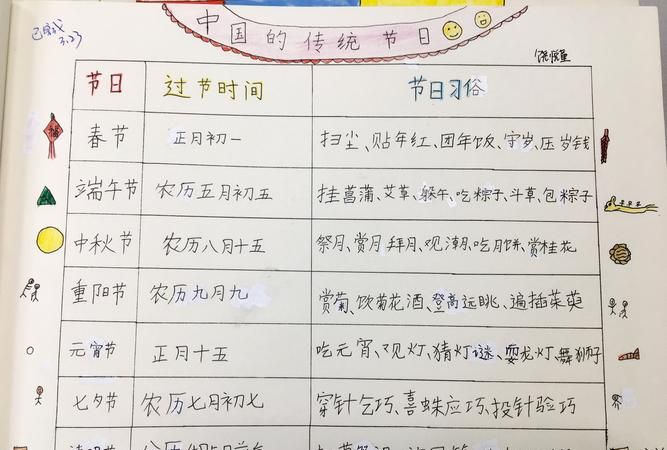
The above is all about China's 24 traditional festivals, China's 24 traditional festival dates, China's 24 traditional festival dates and customs, and related content about China's 24 traditional festivals. I hope it can help you.
